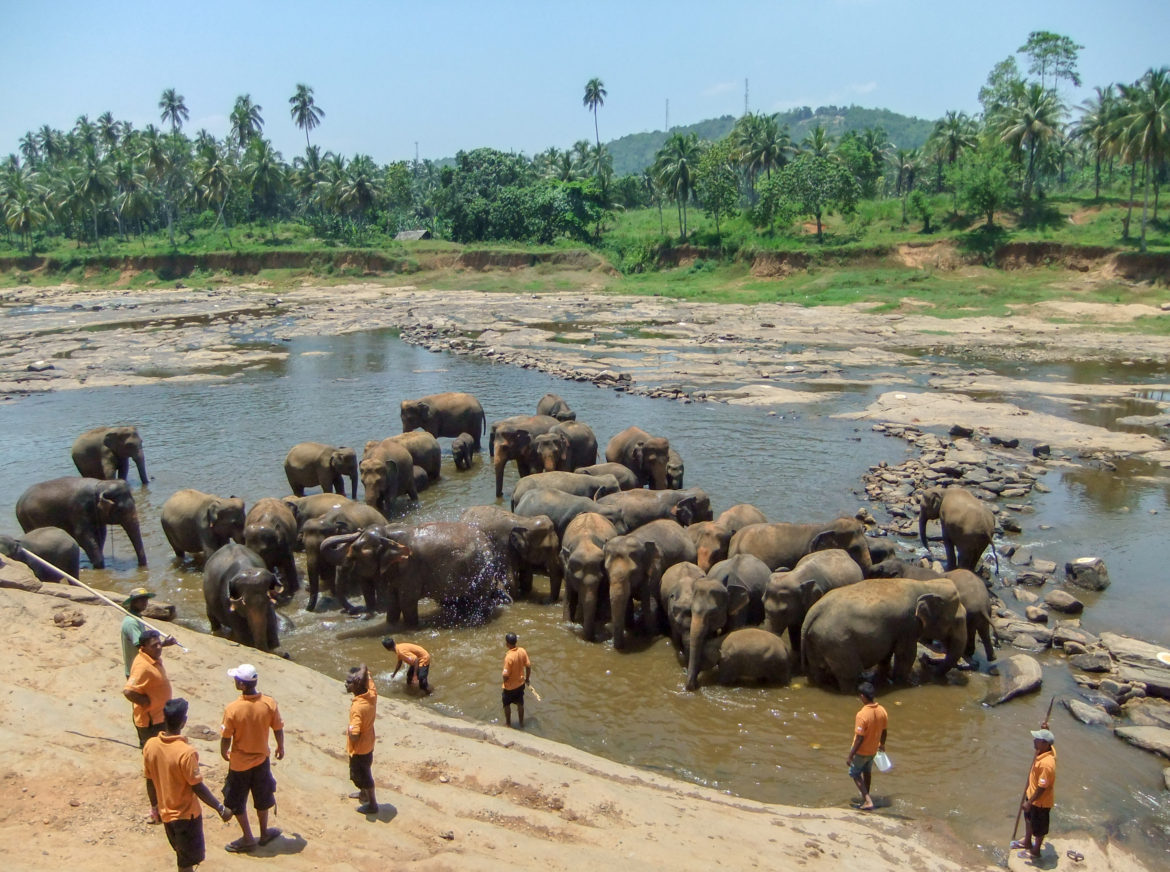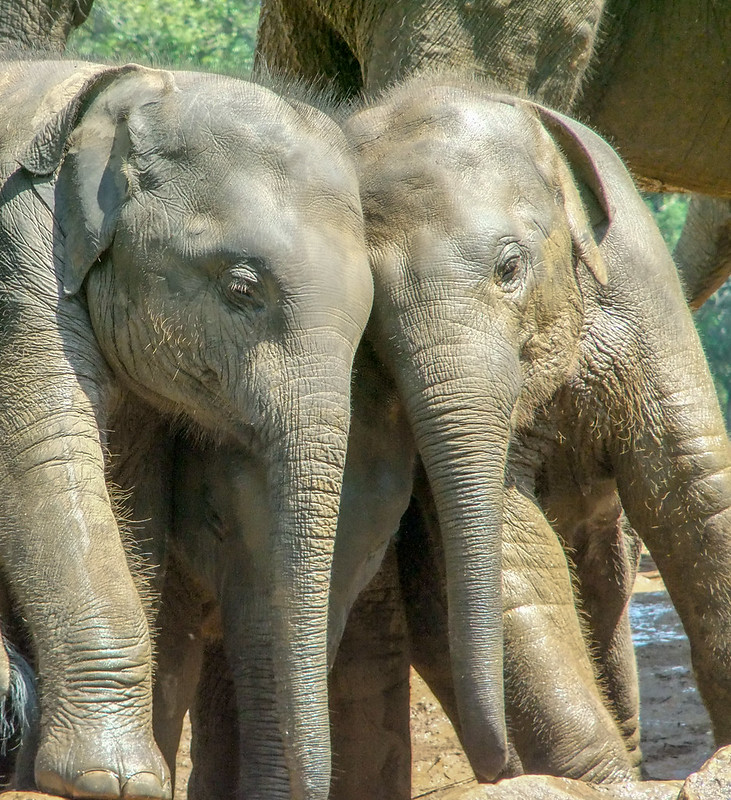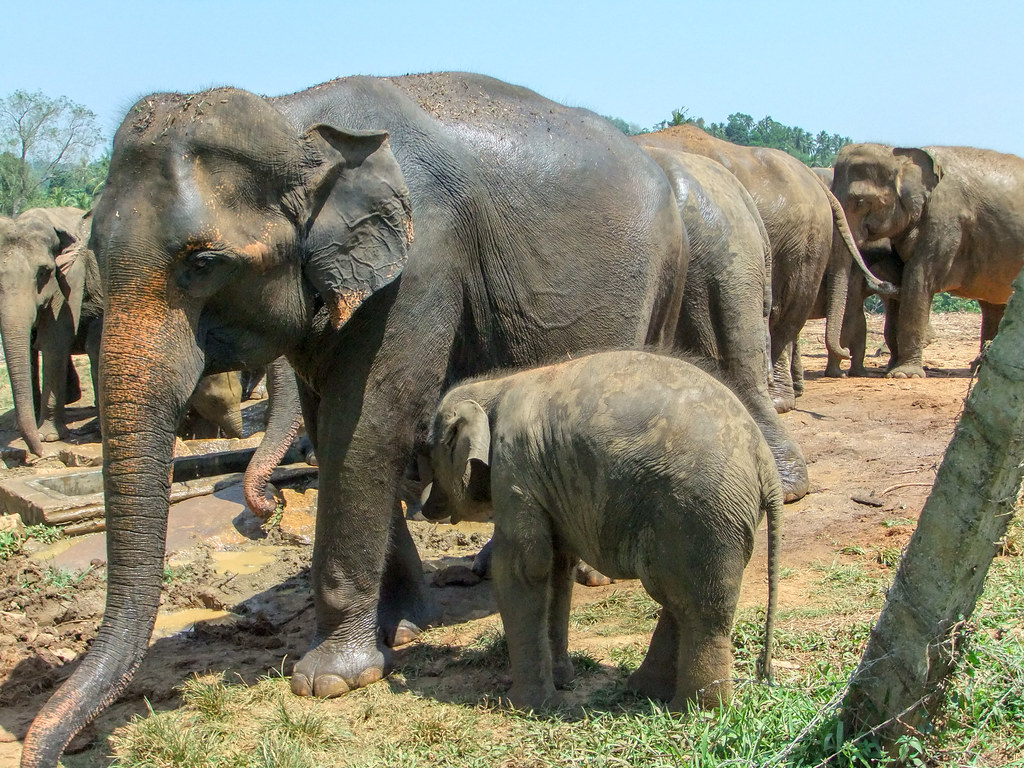As tourists we need to be vigilant of any sites, that cross the ethical boundaries with wildlife or the environment. But sometimes the boundaries are fuzzy. From my tour and research on Sri Lanka’s Pinnawala Elephant Orphanage (PEO) ethics, I found 2 extreme views, plus a more ambiguous middle. So, I will write about my experience and perspectives, while encouraging you the reader to make your own conclusion.
Background of Pinnawala Elephant Orphanage
In Sri Lanka the Pinnawala Elephant Orphanage is the largest herd of captive Asian elephants in the world. It’s also a nursery, breeding ground and tourist site. First established in 1975, their website currently reports 93 elephants living at Pinnawala, because they became abandoned babies or injured in the jungle. Baby elephants are unable to survive on their own, as they rely on the mother’s milk to live. PEO does not release elephants back in the wild.
PEO area is 25 acres (10 hectares), with a river, open brush and fenced areas. An elephant eats more than 300 pounds of food (grass, foliage and tree bark) a day and requires Veterinary Medicine. PEO is one of the largest tourist attractions in Sri Lanka, allowing visitors to interact with the elephants. The tourism revenues help support the maintenance of these animals.
Additionally, Sri Lanka and PEO recycle elephant dung into paper. Coming from an animal that eats up to 300 pounds of food a day and defecates over 15 times/day this is good news. The manufacturers boil dung for an hour to assure the end product is germ free paper.
Pinnawala Elephant Orphanage Tour
& Ethical Questions
The pressing ethical questions about PEO:
Some male elephants wear chains around an ankle during the ‘musth’ period, when they become sexually aggressive. Also, some females wear chains at times because they get restless from changes toward the herd leadership.
Some Baby Orphan Elephants are separated in an isolated area. This is necessary to form bonds with human parents to feed the babies, until they can be mature enough to be with the herd.
Elephants are trained and managed with an ‘ankus,’ a sharp hook with a spike traditionally used as a training tool.
PEO is advertised as an ‘orphanage,’ however, the animals are also bred and displayed for tourists.
My Experience
Pinnawala Elephant Orphanage Tour
When hearing about the tour at PEO, I was enthusiastic about the idea of witnessing these amazing animals up close. Hearing the word ‘orphanage’ also conjured up feelings of trust and idealism beforehand.
My day here was bittersweet, and I admit to mixed feelings about the sanctuary. I witnessed some of the elephants with chains around ankles, isolated baby elephants, mahouts carrying the sharp ankus tools and mahouts taking tips for organizing photo ops with the elephants. Although, I did not witness the Mahouts striking any elephant with the ankus, just wielding it to manage them. And I felt genuine affection, respect and sense of humor from the Mahouts toward the elephants.
I enjoyed watching the herd’s bathing ritual in the river. The tourists stayed back and observed the mahouts leading the elephants into the river. None of these elephants were in chains. So, I felt an overall sense of natural and free existence for the elephants during the ritual. There were also elephants in open fields with tourists getting photo ops by tipping the Mahouts.
Check out my other Sri Lankan Elephant Tour that was 100% Ethical:
Sri Lanka’s Ethical Tourism at Elephant Transit Home & Udawalawe NP
Elephant Dung Recycled as Paper
In the village next to the sanctuary, I witnessed the elephants being guided down the main street like no big deal. This made the village unique, as well as the signs for recycled elephant dung for paper. So, I researched this later and found this positive and fascinating.
Overall, My Conclusion
Years later, I think about travel a lot differently than when I first visited Pinnawala. Now, I question anything involving animal captivity. While I admit PEO is far from perfect and saw much room for improvement. I also question our planet and what options are left. With overpopulation of humans, endangered wildlife and the vast amount of space wildlife requires to roam free, where or what is the answer? Everyday poachers kill wild animals, with orphans left to starve and die. What do we do about that, just leave them to starve?
Even more perplexing, caring for the animals requires a lot of money gained from tourism. At what point are humans exploiting the animals for human profits? These are questions to always consider and keep us in check. But unfortunately, the vicious cycle of overpopulation, materialism and unsustainability run rampant in our world.
Overall, from my experience at Pinnawala with the elephants, my affections and understanding were magnified a millionfold. Experiencing the animals firsthand is the best educational tool we have. This is where the love grows passionately to advocate for these animals. Most importantly, we must educate ourselves on the reality of the circumstances and be a part of the solution for positive change on behalf of the welfare of the elephants and all wildlife.
Hopefully, I have offered enough insight to help lead you to more perspective. Change starts with each person; how can we create a more sustainable future in our individual life? And pertinently, how can we be more responsible tourists?
Read Next!
Palawan’s Incredible Underground River Tour Adventure
Top 10 Magnificent Mumbai Travel Attractions






